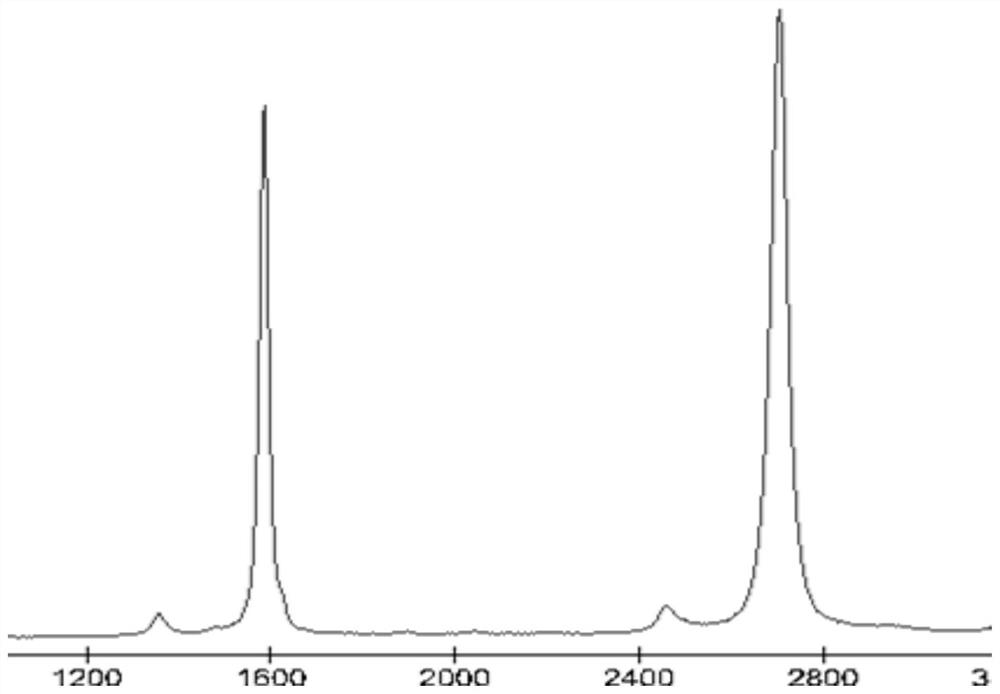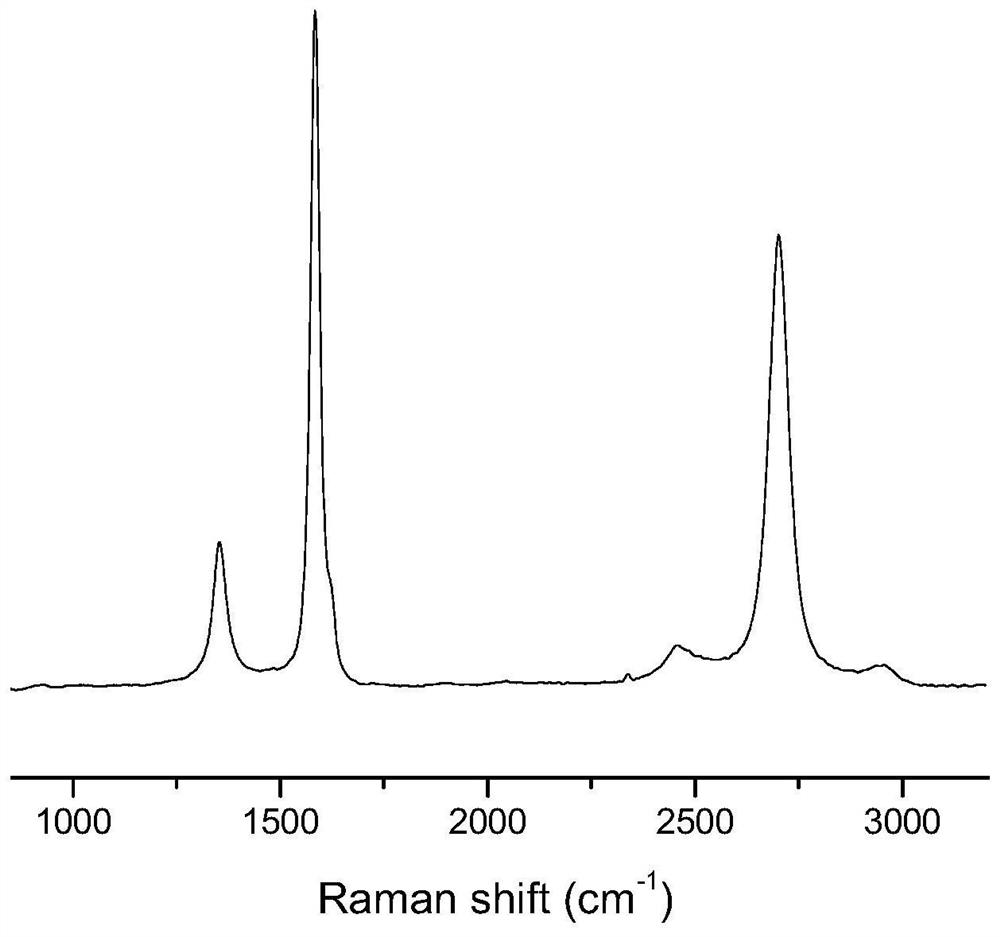A graphene film-based low-frequency acoustic wave detector
A graphene film, low-frequency sound wave technology, applied in graphene, measuring ultrasonic/sonic/infrasonic waves, instruments, etc., can solve the problems of unsuitable sound waves, insufficient strength, low absolute mechanics, etc., to easily withstand high-intensity sound waves, improve Strength and thermal stability, effect of increasing ultimate breaking strength
- Summary
- Abstract
- Description
- Claims
- Application Information
AI Technical Summary
Problems solved by technology
Method used
Image
Examples
Embodiment 1
[0026] (1) Configure a 4 mg / mL graphene oxide aqueous solution, add 10% volume fuming nitric acid, reflux at 100 degrees Celsius for 6 hours, and then centrifuge and wash to obtain porous graphene oxide. It is measured that its carbon atom content is 11.4% less than that before etching.
[0027] The porous graphene oxide was formulated into a graphene oxide aqueous solution with a concentration of 0.5ug / mL, and the hydrophilic polytetrafluoroethylene membrane was used as the substrate to form a membrane by suction filtration.
[0028] (2) Put the graphene oxide film attached to the hydrophilic polytetrafluoroethylene film in a closed container, and fumigate from the bottom to the top for 1 hour at a high temperature of 80 degrees HI.
[0029] (3) The melted solid transfer agent camphor is uniformly coated on the surface of the reduced graphene oxide film by evaporation, casting, etc., and slowly cooled at room temperature, and the film and the substrate are separated.
[0030...
Embodiment 2
[0037] (1) Configure a 2 mg / mL graphene oxide aqueous solution, slowly add 50% volume fuming nitric acid, reflux at 120 degrees Celsius for 1 hour, and then centrifuge and wash to obtain porous graphene oxide. It is measured that its carbon atom content is 36.8% less than that before etching.
[0038] (2) Porous graphene oxide was prepared into a graphene oxide aqueous solution with a concentration of 10ug / mL, and the PC membrane was used as the substrate to form a film by suction filtration.
[0039](2) Put the graphene oxide film attached to the PC film in a closed container, and fumigate from the bottom to the top at 100 degrees HI for 0.1 h.
[0040] (3) Uniformly coat the melted solid transfer agent naphthalene on the surface of the reduced graphene oxide film by evaporation, casting, etc., and slowly cool it at room temperature.
[0041] (4) Slowly volatilize the graphene film supported by the solid transfer agent obtained above at 80 to obtain an independent self-suppo...
Embodiment 3
[0048] (1) Configure a 3 mg / mL graphene oxide aqueous solution, slowly add 20% volume fuming nitric acid into it, reflux at 100 degrees Celsius for 5 hours, and then centrifuge and wash to obtain porous graphene oxide.
[0049] (2) Porous graphene oxide was prepared into a graphene oxide aqueous solution with a concentration of 1 ug / mL, and the AAO membrane was used as the substrate to form a film by suction filtration.
[0050] (2) Put the graphene oxide film attached to the AAO film in an airtight container, and fumigate from the bottom to the top for 0.5 h at a high temperature of 90 degrees HI.
[0051] (3) Uniformly coat the melted solid transfer agent sulfur on the surface of the reduced graphene oxide film by evaporation, casting, etc., and slowly cool it at room temperature.
[0052] (4) Slowly volatilize the graphene film supported by the solid transfer agent obtained above at 120 degrees to obtain an independent self-supporting graphene film.
[0053] (5) Spray one ...
PUM
| Property | Measurement | Unit |
|---|---|---|
| thickness | aaaaa | aaaaa |
| height | aaaaa | aaaaa |
| breaking strength | aaaaa | aaaaa |
Abstract
Description
Claims
Application Information
 Login to View More
Login to View More - Generate Ideas
- Intellectual Property
- Life Sciences
- Materials
- Tech Scout
- Unparalleled Data Quality
- Higher Quality Content
- 60% Fewer Hallucinations
Browse by: Latest US Patents, China's latest patents, Technical Efficacy Thesaurus, Application Domain, Technology Topic, Popular Technical Reports.
© 2025 PatSnap. All rights reserved.Legal|Privacy policy|Modern Slavery Act Transparency Statement|Sitemap|About US| Contact US: help@patsnap.com



